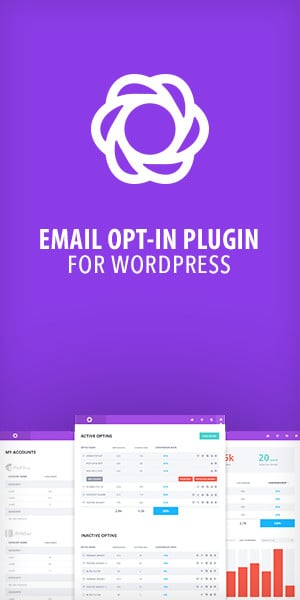If you’re a blogger, content creator, or a business owner with a website, then you know how
important it is to have good SEO (Search Engine Optimization) in order to rank higher on search
engines like Google.
However, creating high-quality content is only half the battle. The other half is promoting that content effectively so that it can be seen by your target audience.
In this blog, we will discuss some effective ways to promote your content so that you can improve your
SEO and drive more traffic to your website!
Why is high-quality content important for SEO?
It is no secret that high-quality content is crucial for effective SEO.
As discussed in the previous sections, well-written and informative articles are the building blocks of online marketing success. Not only do they attract readers, but they also serve as a foundation for backlinks,
internal linking, and other SEO techniques.
Creating original and relevant content can be challenging, but it’s a worthwhile investment that will pay off in the long run.
By prioritizing long-tail keywords and avoiding highly competitive ones, content creators can ensure that their
work ranks higher on Google and other search engines.
The next few sections will cover various strategies for promoting your content, but none of them will be effective without first creating high-quality content.
Tips for creating original and relevant content.
As discussed earlier, high-quality content is essential for SEO, and it all starts with coming up with unique and
informative ideas.
One tip is to research what competitors are doing and look for gaps in their content that you can fill. Another tip is to conduct keyword research and use those keywords to create content that answers the questions your target audience is asking.
Writing in a clear and concise manner with a reader-first mindset is also crucial for engaging content. Ultimately,
creating original and relevant content will help to not only improve your SEO performance but also establish you as an authority in your industry.
Strategies for making your content shareable.
Once you have created high-quality content, the next step is to make it shareable.
Social media is a powerful tool for content promotion, so it’s essential to think about how your content will be
received on these platforms.
One way to make your content shareable is by creating eye-catching visuals that grab people’s attention. You can also add social media share buttons to your website, making it easy for users to share your content with their friends and followers. Additionally, utilizing influencers in your niche to share your content can help expand its reach.
Remember to keep your content relevant and engaging so that people will want to share it. By incorporating
these strategies into your content promotion plan, you can increase your organic reach and
improve your SEO performance.
How to use email outreach to promote your content.
Once your high-quality content is created, the next step is to promote it for better SEO.
One strategy is utilizing email outreach to connect with professionals and influencers to promote your
content. However, getting responses to these outreach emails can be challenging.
The blog offers eight tips for better email outreach, including personalized subject lines and establishing a
relationship beforehand. Additionally, making your content shareable and using internal linking
can increase your SEO performance.
Techniques for speeding up your website and targeting shoulder niches can also improve your search engine rankings. Updating existing content with refreshed information and images is another effective strategy.
Finally, the blog suggests leveraging the power of visual content to attract backlinks to your site.
The importance of internal linking for SEO.
Internal linking is a crucial aspect of SEO that is often overlooked by website owners.
As explained in previous blog sections, high-quality and original content is essential for optimizing
your website’s SEO. However, internal linking plays a vital role in guiding search engine
crawlers and website visitors through your website’s hierarchy of importance.
Well-structured internal linking can improve website navigation, enhancing the user experience, and boosting
your website’s credibility in search engine results.
To achieve this, website owners should develop an internal linking strategy, ensuring that any internal links are relevant and add context to the content being viewed. By doing so, search engine crawlers can better understand your site, and visitors can locate important content quickly and efficiently.
Techniques for speeding up your website.
Website speed is a key component of SEO and a factor that directly impacts user experience. In
order to improve your website’s search engine ranking and user-friendliness, it is important to
implement techniques for speeding up your website.
Some common techniques include optimizing image sizes, minifying code, and reducing HTTP requests. Additionally, using a content delivery network (CDN) and caching can also help improve website speed.
By taking the time to implement these techniques, you can ensure that your website loads faster and provides a
better experience for users, ultimately leading to increased traffic and conversions.
The benefits of using the Google Search Console.
The Google Search Console offers a variety of benefits for website owners looking to improve
their SEO.
By using the console, website owners can learn new keywords and improve their content marketing strategy. They can also discover new countries where their website is being found, leading to new audiences and opportunities for growth.
The console can provide valuable data necessary to monitor website performance in search and improve search rankings, including important information about backlinks, which are a key ranking factor.
In addition, the Search Console offers tools for analyzing the traffic coming to your site from Google, which can help business owners target the right audience to improve lead generation.
Combining the benefits of Google Search Console with strategies for creating high-quality content, promoting it effectively, and using internal linking and other SEO tactics can lead to significant improvements in search
rankings and overall website performance.
How to identify and target shoulder niches.
After producing high-quality content, the next step is to identify and target shoulder niches. This
involves finding businesses or blogs that serve the same audience as you but are not direct
competitors.
The goal is to write guest posts for these sites and link back to your own content. This exposes you to a new audience that you may not have reached otherwise, and can also result in backlinks to your website which is great for SEO.
To find these shoulder niches, start by identifying the keywords that represent your niche and search for blogs or businesses that target those same keywords. By establishing these mutually beneficial relationships, you can continue to expand your reach and improve your SEO.
The power of visual content and how to get backlinks from it.
Visual content is an essential part of any successful SEO strategy. In fact, it can help build more
backlinks to your content, which can improve your search engine rankings.
Incorporating visual content such as infographics, videos, and images into your content strategy can not only make it more engaging but can also make it shareable.
To get backlinks from visual content, you need to create high-quality and relevant visuals that other websites and bloggers would want to use as a resource in their own content.
You can also reach out to websites and bloggers in your niche and offer to create visual content for them in exchange for a backlink to your website. By using visual content as part of your SEO strategy, you can attract more visitors to your website and boost your search engine rankings.
Updating existing content for improved SEO performance.
Updating existing content is a key strategy for improving SEO performance. By refreshing old
posts, you can keep your site’s content relevant and up-to-date, which can lead to better search
engine rankings.
Look for pages that haven’t been updated in a while and start by redoing your keyword research. By incorporating high-volume keywords into your old content, you can give yourself an improved chance of ranking higher in search results.
Don’t forget about formatting, which can impact user experience and ultimately affect your SEO and conversions. By optimizing your site’s existing content, you can see a significant improvement in your search
engine traffic.
Keep in mind, quality, authoritative content is the number one driver of your search engine rankings, so make sure your updated content meets those standards.




